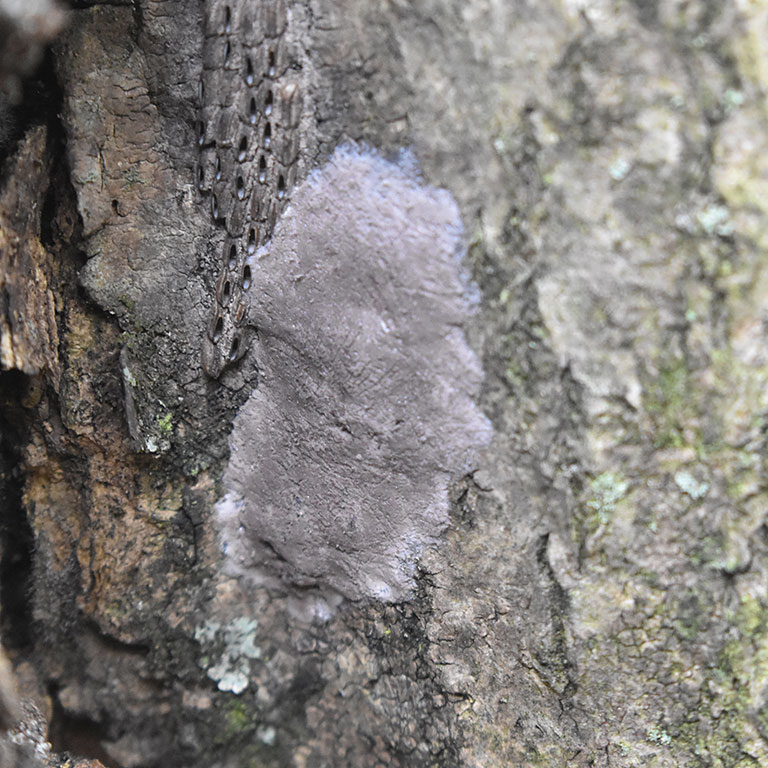Zoom in


Figure 1: Spotted lanterfly egg mass.
Photo credit: Anne Nielsen, Rutgers University.
Spotted lanternfly (SLF) has four juvenile (nymph) stages before molting to adult stage. Nymphs hatch from egg masses in May. Each egg mass contains 30–50 eggs and multiple egg masses can be present on a single tree, therefore, it is not uncommon to find SLF nymphs by the hundreds on a single plant. During the juvenile stages, SLF feeds on multiple plants for the first two months, often in large numbers. Feeding damage is variable from no visible damage to wilting of the plant, even with the same number of nymphs. Nymphs will move around to different plants throughout their life cycle.
- Q: Do I need to report an SLF on my property or at work?
A: Sightings outside the 8-county quarantine area (Burlington, Camden, Gloucester, Hunterdon, Mercer, Salem, Somerset, and Warren) can be reported onlie to NJ Department of Agriculture - Q: Do they bite?
A: No, SLF have piercing / sucking mouthparts suitable to feed on sap from plants and trees, but not humans or animals. - Q: Do they transmit disease?
A: No, there is no evidence that they spread disease from plant to plant, nor do they carry any disease that would affect us. - Q: Will they hurt my pets?
A: We have no reports of harm to pets, and they are likely unpalatable should your pet come across one. - Q: Where did they come from?
A: They are an invasive species from China that arrived as eggs on imported stone - Q: Should I scrape egg masses off trees?
A: If you would like to scrape eggs within reach, this will reduce the number of nymphs you have in the Spring. Eggs should be scraped into containers with soapy water or hand sanitizer and discarded. - Q: Should I set up sticky bands or circle/trunk traps?
A: If you would like to, and are able to remove the nymphs frequently, the use of bands or traps (see above for information) will reduce the number of nymphs on those trees, but this may not immediately reduce the numbers of adults in the Fall as they are highly mobile. Sticky bands need to be covered with loose chicken wire to prevent capture of non-target animals. - Q: What about bug zappers or other attractant traps?
A: Bug zappers or similar products will not work and there is no known effective attractant.

